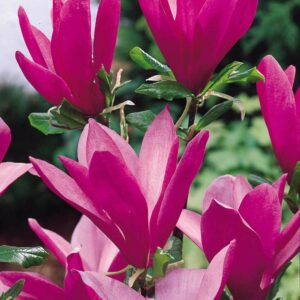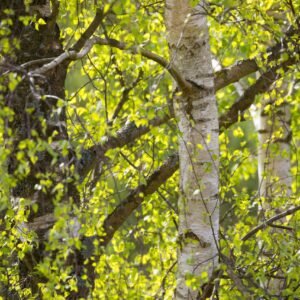Koelreuteria paniculata – Pride of India Multistem
£300.00
Description
Quick Facts
- Common Name: Golden Rain Tree, Pride of India, China Tree
- Botanical Name: Koelreuteria paniculata
- Plant Type: Deciduous tree (multistem form)
- Mature Height: 6-8m (multistem)
- Mature Spread: 5-7m
- Flowering Period: July to August
- Flower Colour: Golden-yellow flowers in large panicles
- Foliage: Pinnate leaves, bright green turning golden-yellow in autumn
- Hardiness: RHS H5 (hardy in most areas)
- Soil Requirements: Moist, well-drained, tolerates most soil types including chalk
- Aspect: Full sun
- Maintenance: Low
Description
Experience the spectacular beauty of Koelreuteria paniculata in stunning multistem form, the magnificent Golden Rain Tree that brings exceptional summer colour, exotic character, and year-round architectural presence with its golden flowers and extraordinary lantern-like seed pods. This outstanding ornamental tree offers remarkable multi-season interest—masses of golden-yellow flowers held in large upright panicles measuring 30-40cm long that appear in mid to late summer when few other trees are flowering, creating spectacular displays of sunshine-yellow that illuminate the garden, extraordinary papery seed pods that develop after flowering in shades of pink, red, and bronze resembling Chinese lanterns that persist into autumn providing unique ornamental interest, beautiful pinnate foliage composed of multiple leaflets that creates elegant texture throughout summer before transforming into warm golden-yellow autumn colour, and the multistem form with multiple trunks arising from the base creates enhanced architectural presence, fuller canopy, and contemporary sculptural impact, making this one of the finest and most distinctive trees for creating summer drama, exotic beauty, and architectural focal points in your garden.
Throughout spring and summer, this captivating tree displays its characteristic pinnate leaves measuring 20-40cm long, each composed of 7-15 ovate leaflets with irregular lobes and serrated edges in bright to mid-green, creating elegant, feathery texture. The multistem form with 3-5 main trunks arising from the base creates fuller, more sculptural presence than single-stem specimens—perfect for contemporary gardens and architectural plantings. But the tree’s crowning glory appears in mid to late summer (July-August) when it becomes adorned with masses of golden-yellow flowers held in large, upright pyramidal panicles measuring 30-40cm long at the branch tips. These spectacular flower clusters create a stunning display of golden colour when most trees have finished flowering—like sunshine captured in the canopy. Each tiny flower measures only 1-2cm across but the massed effect is breathtaking. After flowering, the tree develops its second spectacular feature—papery, bladder-like seed pods measuring 4-5cm long that start green, then transform through shades of pink, coral-red, and bronze-brown, resembling decorative Chinese lanterns hanging from the branches. These extraordinary pods persist well into autumn, providing unique ornamental interest. In autumn, the foliage transforms into warm golden-yellow before falling.
Native to China, Korea, and Japan, Koelreuteria paniculata is named after Joseph Koelreuter, an 18th-century German botanist. The common name ‘Golden Rain Tree’ perfectly describes the cascading golden flowers, whilst ‘Pride of India’ is a misnomer as the tree is not native to India. Hardy and remarkably adaptable once established, this tree thrives in British conditions when planted in full sun and sheltered positions, tolerating urban pollution, heat, drought once established, and a wide range of soil types including chalk and alkaline soils. One of the best trees for late summer colour when few others are flowering. The multistem form creates more impact in smaller spaces and suits contemporary garden styles.
Create stunning compositions by planting as spectacular specimen features in lawns, contemporary gardens, or prominent positions where the summer flowers, extraordinary seed pods, and multistem architecture can be fully appreciated. Magnificent in exotic or tropical-style gardens, oriental landscapes, or as bold focal points in mixed borders. Exceptional in urban gardens where the pollution tolerance, compact size, and summer flowering create maximum impact. Works beautifully in gravel gardens or Mediterranean-style plantings. The multistem form creates sculptural presence perfect for modern designs. Plant where the golden flowers and pink-red seed pods can be enjoyed up close, and where the tree receives full sun for best flowering.
Caragh Garden Notebook
Planting: Space trees 6-8m apart if planting multiples, or allow 7-9m for specimen placement to accommodate the spreading mature canopy. Plant container-grown specimens year-round, though spring or early autumn is ideal. Dig holes twice the width of the root ball and incorporate organic matter. Plant at the same depth as the container—avoid planting too deeply. Stake the main stems individually for the first 2-3 years. Water thoroughly and mulch around the base. Choose positions in full sun—essential for best flowering and seed pod production. Select sheltered positions protected from harsh winds.
Soil Preparation: Thrives in moist, well-drained soil with pH 6.0-8.0. Tolerates a wide range of soil types including clay, loam, sand, chalk, and moderately acidic to alkaline conditions. Prefers fertile, well-drained conditions but adapts remarkably well to poorer soils. Tolerates drought once established but best growth occurs with consistent moisture. Dislikes waterlogged sites. Exceptionally tolerant of urban pollution, heat, and challenging conditions. Full sun is essential—shade significantly reduces flowering and seed pod production.
Container Growing: Can be grown successfully in very large containers (minimum 70cm diameter) using soil-based compost, making this suitable for patios, terraces, and contemporary gardens. The multistem form works particularly well in containers, creating sculptural features. Water regularly during growing season and feed in spring with slow-release balanced fertiliser. Protect containers from hard frost in winter. Repot every 3-4 years in early spring. Container-grown specimens remain more compact and create spectacular patio features with summer flowers and exotic seed pods.
Seasonal Care: Requires minimal pruning—the naturally rounded, multistem form develops without intervention. Remove only dead, damaged, or crossing branches in late winter when dormant. If desired, thin some stems to maintain 3-5 main trunks and showcase the multistem architecture. Remove any low branches to create clear trunks and highlight the multistem form. Avoid heavy pruning as this removes flowering wood. Apply slow-release balanced fertiliser in early spring. Mulch annually with organic matter. Water during dry spells in the first 3-5 years until established—very drought-tolerant once mature. Generally pest and disease resistant.
Propagation: Can be grown from seed collected from ripe seed pods in autumn—seeds germinate readily. Sow fresh seed in spring after cold stratification. Seedlings grow quickly but take 5-7 years to reach flowering size. Root cuttings taken in winter are also successful. Softwood or semi-hardwood cuttings in summer can be attempted with rooting hormone. To maintain the multistem form, young plants should be pruned or trained to develop multiple trunks from the base.
This spectacular beauty is absolutely stunning—those masses of golden-yellow flowers in mid to late summer create such gorgeous colour when few other trees are blooming! But the real magic is those extraordinary papery seed pods in pink, coral, and bronze that look like Chinese lanterns hanging in the tree—utterly unique! The multistem form creates such sculptural, contemporary presence with multiple trunks and fuller canopy. Beautiful pinnate foliage, golden autumn colour, tolerates challenging conditions, and that exotic character is captivating. Summer sunshine in tree form!





